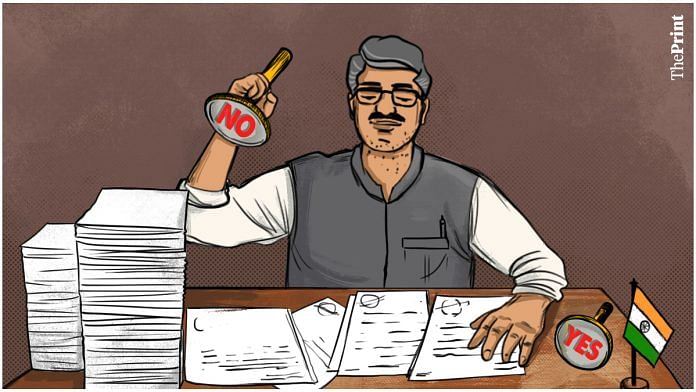This seems to be a season for bad ideas. The latest is the government’s decision to license the imports of personal computers, laptops, and notebooks. This is one of the few times that such a restriction has been imposed after import licences were mostly abolished more than three decades ago.
So far the reversal of trade-policy reforms had been confined largely to jacking up tariffs, thereby abandoning about five years ago the previously stated intention to bring tariffs down to the levels prevailing in Southeast Asia. Now the government has gone a step further by re-introducing physical controls. The objectives are worthy (security and import substitution), but the road to the economic hell that India once was, was always paved with good intentions.
What is significant is that the reliance on economic-policy tools (like tariffs) has given way to administrative tools, which belong to the mindset that created the licence-permit raj.
Another recent example of this approach is the ban on the export of non-basmati white rice, though the country has stocks well in excess of buffer stock requirements. The objectives are again unexceptionable: Arrest inflation and avoid shortages.
The economic tool to use would have been increase in supply, by releasing rice from government godowns. Instead, the administrative recourse is an export ban. In the process, India has done no good to its international reputation as a reliable supplier in a global rice market, where it is the largest exporter.
It is a feature of government interventions in markets, especially with rules that tend to be complicated, that they often lead to disputes as companies try to game the system. What results is a sour after-taste about the policy environment.
The history of the incentives for manufacturing electric vehicles has followed this trajectory, as the government now goes after apparently fraudulent claims by several companies, even as it has sharply reduced the incentive from 40 per cent to 15 per cent. That raises the question whether the initial 40 per cent incentive was excessive, or even needed — questions that had been asked even within the industry.
The immediate impact of the reduction in incentive is a price shock and a collapse in sales of electric two-wheelers.
The question of proportionality and reasonableness crops up also in the case of Micron’s proposed investment in a chip assembly and testing plant in Gujarat (different from the core business of chip fabrication). The government’s policy allows for a 50 per cent capital subsidy, while the Gujarat government has chipped in with a further 20 per cent. So nearly $2 billion of the proposed investment of about $2.75 billion will be paid for by the Indian taxpayer.
By what logic and calculation can this be justified for a wholly foreign-owned venture? And what are the risks?
Sometimes, the announcement is made first and discussions with market participants take place post-facto. The announcement of a tax on overseas expenditure via credit cards is an example of policy-making where thought follows rather than precedes action.
The practical difficulties in collecting such a tax (which is not really a tax since it will be reimbursed when tax returns are filed) would have been easily understood if discussions had been held with banks and credit-card companies before the measure was announced.
In the event, the effective date for the tax has been postponed more than once, and repeated amendments to the policy announced, with three different applicable rates, depending on the purpose and extent of the expenditure. It is hard to call this anything other than an operational nightmare, possibly unique to India, and arguably devoid of purpose.
The market-oriented reforms of 1991 and later were led or heavily influenced by economists working in the government. Their influence and the desire to open up to the world have both waned as the years have passed, and bureaucrats increasingly run the system. Certainly, decisions like cancelling overnight 86 per cent of the country’s currency stock would not have been endorsed by any sensible economist.
It is time to restore economics and prior consultation to their rightful place in the policy-making process.
By special arrangement with Business Standard.
Also Read: Why India’s politics is going populist and its economics nationalist, just like US & China



